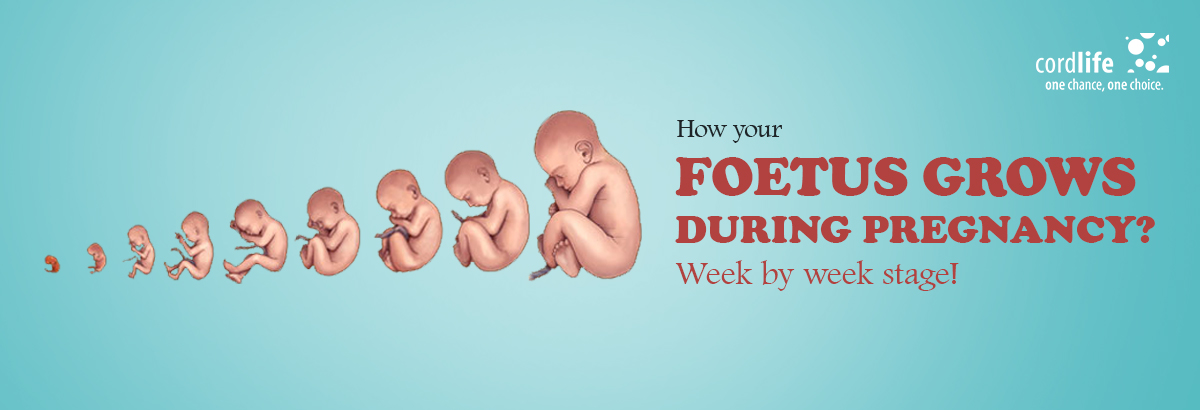Table of Contents
The age-old tale of the blossoming of life often follows uncharted paths. Understanding each stage of Foetal development is essential for navigating this fascinating voyage.
Stages of Foetal Development
There are three Pregnancy stages:
- Germinal stage – Fertilisation occurs in this phase. A tiny bundle of cells called the blastocyst implants itself into the mother’s uterine lining.
- Embryonic stage – The blastocyst goes on to evolve into the future baby and develops distinct head, eyes, mouth, limbs, heart, brain and spinal cord, finally becoming an embryo.
- Foetal stage – The Embryo to foetus transformation occurs. All major organs develop, and features like hair, fingernails and eyelashes appear. The foetus begins to move its limbs and grows rapidly in size.
The Trimesters
Each pregnancy is a unique and incredible process. However, the Pregnancy timeline consists of three distinct stages of progress, each lasting three months. Reaching each trimester milestone is truly a moment to celebrate.
First Trimester(Weeks 1 to 12)
Week 1 – 2
The first two weeks of pregnancy are a time for the body to gear up for a whole new phase. The ovum is released at the end of the second week, by which time hormones begin flowing and the uterine walls are thickened in anticipation of a pregnancy.
Week 3 – 4
Fertilisation takes place as the sperm meets the egg during week 3. This process creates a zygote.
During week 4, the zygote expands into a blastocyst and nestles into the mother’s uterine lining. An amniotic fluid-filled cavity called the amniotic sac grows around the blastocyst. The Amniotic fluid regulates the temperature and protects the embryo. A new organ known as the Placenta also develops during this time. The placenta’s function includes providing nutrients and oxygen to the embryo and draining waste.
Weeks 5 – 8
The embryo starts developing the heart, brain, spinal cord and neural tissue of the central nervous system. Limbs start developing, blood cells appear, and circulation begins. Ears, eyes, mouth, bones and genitals take form. By now, all vital organs and body systems appear. The Baby’s heartbeat can be detected via ultrasound. The embryo now becomes a foetus.
Weeks 9 – 12
This is a period of rapid Prenatal development as foetus develops distinct facial features, bones and muscles. It has fully developed arms, hands, fingers, feet and toes. The circulatory, digestive and urinary systems continue to develop, and the liver begins producing bile.
Second Trimester (Weeks 13 to 28)
Weeks 13 – 16
By now foetus develops skin, vocal cords and external genitals. Fingerprints begin to form. Lungs begin to develop. Ears develop, and the foetus can hear the mother’s voice.
Weeks 17 – 20
In this period, the baby’s growth in the womb is significant. By this time, the mother may feel the first Foetal movements, also known as “quickening”. The foetus has its own unique set of fingerprints.
Weeks 21 – 24
The baby’s limb movements are now coordinated. The lungs are fully developed. The baby now puts on body fat.
Weeks 25 – 28
The baby continues to gain more body fat and weighs around 1 kg. The nervous system and lungs develop at a rapid pace. They can now blink and have eyelashes.
Third Trimester (Weeks 29 to 40)
Weeks 29 – 32
The baby has a distinct sleep-wake cycle. The Baby kicks in the womb and starts getting more pronounced during this period.
Weeks 33 – 36
In this period, the brain continues to mature and weighs around 2 kg.
Weeks 37 – 40
This phase is marked by a vital change of position by the fetus in preparation for birth. The baby is roughly 45 cm in length and weighs about 3.5 kg.
We wish all parents the very best for their pregnancy journeys, or you can download our pregnancy guide. May each stage of foetal development and the birth story be a happy experience!
